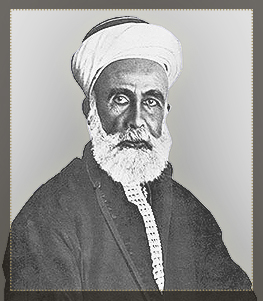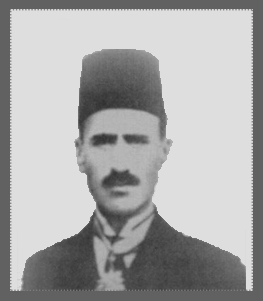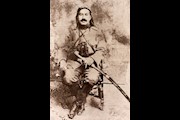Al Qibla used the Quranic verse, “We appointed the Qibla to which thou wast used, only to test those who followed the Apostle from those who would turn on their heels from the faith” (Al Baqarah: 143) as its motto. Sharif Hussein bin Ali chose the name Al Qibla from this verse for the first Arab Hashemite newspaper published in Hijaz.
Mohib Al Deen Al Khatib was named chief editor of Al Qibla, which was issued twice a week (on Mondays and Thursdays). Sheikh Al Tayeb Al Sassi later took over as chief editor. The paper’s first issue only contained news of the Great Arab Revolt — “The Arab Awakening” — in Hijaz, recording its sequence of events. It also featured articles on the Arab Awakening and a poem by Fuad Al Khatib: “Salute the Sharif and the Grand Mosque and rise as those who honour the pledge and promise”.
The issue also included news, reports and announcements related to life in the young Arab state in Hijaz and the military operations of the Eastern and Northern Armies of the Arab Awakening.
Sharif Hussein supervised the editing of articles in Al Qibla, which was characterised by a simple, elegant design and did not use colloquial Arabic. Its articles were written in formal Arabic and its columns addressed Arab, Muslim and even international issues.
Al Qibla was not merely a local Hijaz paper but went beyond that, boldly interacting with the nationalist, Islamic, humanitarian issues of the period. This was most evident in its dealings with the Arab and international press, as it exchanged news stories and articles with newspapers, magazines and agencies, such as Reuters and the Wadi Al Nil, Al Muayad, Near East and Al Muqattam newspapers, among others.
The four-page broadsheet also explained the Hashemite renaissance project as well as Arab, Muslim and international reactions through its cooperation with these papers. It came to constitute the foremost source for and record of the intellectual and political activity that the Arab region witness in the period 1916-1924. It also shed light on the beginnings of the educational, economic, agricultural and social awakening of Hijaz, with the establishment of schools, institutes, and hospitals and the organisation of public order.
The newspaper gained its importance by being the main source that documented the Great Arab Awakening from a variety of perspectives —intellectually, militarily, socially and politically — without disregarding political and international events. The paper showed how Arab and Muslim nations view it as a forum for the nation’s intellectuals and a mouthpiece for those who were a main party to this awakening and showing its starting points, reasons and geographic dimensions.
It is also worth noting that the first newspaper issued before the Hashemite reign was Hijaz, in 1908. It was produced in Arabic and Turkish. Although it was followed by Shams Al Haqiqa, Hijaz was the official paper, and it continued to be issued until the liberation of Mecca, after which it moved to Medina.
In addition to Al Qibla, Sharif Hussein bin Ali gave permission for the publishing of Al Falah, which followed the former’s editorial policies. The Sharif also ordered the publication of an agricultural magazine, Al Majalla Al Ziraieh, but Al Qibla continued to be the number one publication in the region.
In celebration of the Great Arab Revolt’s Centennial, major national papers will be republishing Al Qibla’s first 100 issues.
- All
- Key Heros
- Related Photos
- Related Documents
التحية العربيةفي القبلة
18/02/2016
Sharif Hussein bin Ali - King of Arabs
Sharif Hussein bin Ali was born in Istanbul in 1853, where his father and grandfather were staying at the time. His grandfather was then appointed as Emir of Hijaz, so he travelled with him to Mecca to studied. He also gained vast experience in his youth in the affairs of tribes.More...

Fuad Al Khatib - Revolt Poet
One of the Arab figures who gained recognition during the Great Arab Revolt, Fuad Al Khatib belongs to a Lebanese family known for being versed in literature, science and jurisprudence.More...


